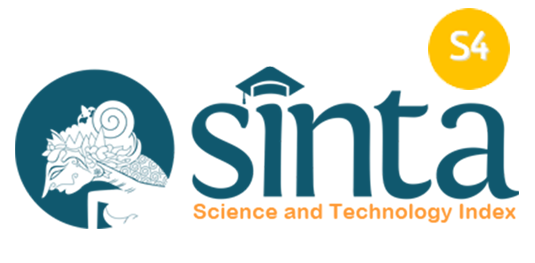Personal and Contextual Factors as Correlates of Entrepreneurial Intentions among Pre-service Science, Technology, and Mathematics Teachers
Abstract
Keywords
Full Text:
PDFReferences
Akinsola, M. K., and Awofala, A. O. A. (2009). Effects of personalization of instruction on students’ achievement and self-efficacy in mathematics word problems. International Journal of Mathematical Education in Science and Technology, 40(3), 389-404.
Amit, R., Glosten, L., and Muller, E. (1993). Challenges to theory development in entrepreneurship research. The Journal of Management Studies, 30(5), 815-834.
Awofala, A. O., Lawal, R. F., Arigbabu, A. A. and Fatade, A. O. (2022). Mathematics productive disposition as a correlate of senior secondary school students’ achievement in mathematics in Nigeria. International Journal of Mathematical Education in Science and Technology, 53(6), 1326-1342.
Awofala, A. O. A., Akinoso, S. O. and Fatade, A. O. (2017). Attitudes towards computer and computer self-efficacy as predictors of preservice mathematics teachers’ computer anxiety. Acta Didactica Napocensia, 10(3), 91-108.
Awofala, A. O. A., Olabiyi, O. S., Awofala, A. A., Arigbabu, A. A. Fatade, A. O. and Udeani, U. N. (2019). Attitudes toward computer, computer anxiety and gender as determinants of pre-service science, technology, and mathematics teachers’ computer self-efficacy. Digital Education Review, 36, 51-67.
Awofala, A. O. A., Awofala, A. A., Fatade, A. O., and Nneji, L. M. (2012). Determinants of students’ achievements in senior secondary school mathematics and sciences: What is the role of test response mode and locus of control?. International Journal of Mathematics Trends and Technology, 3(1), 125-130.
Awofala, A. O. A. and Fatade, A. O. (2015). Validation of the domains of creativity scale for Nigerian preservice science, technology, and mathematics teachers. Electronic Journal of Research in Educational Psychology, 13(1), 131-150.
Awofala, A. O. A., Fatade, A. O., and Udeani, U. N. (2015). Nigerian preservice science, technology, and mathematics teachers’ computer self-efficacy: An exploration based on gender, age, and discipline of study. International Journal of Education in Mathematics, Science and Technology, 3(2), 101-119.
Baughn, C.C., Cao, J. S. R., Le, L. L. M., Lim, V. A., and Neupert, K.E. (2006). Normative, social and cognitive predictors of entrepreneurial interest in China, Vietnam and the Philippines. Journal of Developmental Entrepreneurship, 11(1), 57-77.
Begley, T. M., and D. P. Boyd (1987). Psychological characteristics associated with performance in entrepreneurial firms and smaller businesses. Journal of Business Venturing, 2(1), 79-93.
Bonnett, C. and Furnham, A. (1991). Who wants to be an entrepreneur? A study of adolescents interested in a young enterprise scheme. Journal of Economic Psychology, 12(3), 465-478.
Boyd, R. (1990). Black and Asian self–employment in large metropolitan areas: A comparative analysis. Social Problems, 37(2), 258-274.
Brockhaus, R.H. (1980). The risk-taking propensity of entrepreneurs. Academy of Management Journal, 23(3), 509-20.
Collins, C., Hanges, P. and Locke, E. (2004). The relationship of achievement motivation to entrepreneurial behavior: A meta-analysis. Human Performance, 17(1), 95–117.
Cooper, A., Woo, C., and Dunkelberg, W. 1988. Entrepreneurs’ perceived chances for success. Journal of Business Venturing, 3(2), 97–108.
Davidson, P., and Honig, B. (2003). The role of social and human capital among nascent entrepreneurs. Journal of Business Venturing, 18(3), 301-331.
Denanyoh, R., Gabriel, K. A. and Nyemekye, E. (2015).Factors that impact on entrepreneurial intention of tertiary students in Ghana. International Journal of Business and Social Research, 5(3), 19-29.
Feldman, D. C., and Bolino, M. C. (2000). Career patterns of the self-employed: career motivations and career outcomes. Journal of Small Business Management, 38(3), 53–67.
Galloway, L. and Brown, W. (2002). Entrepreneurship education at university: a driver in the creation of high growth firms?. Education and Training, 44(8/9), 398-405.
Göksel, M. A., and Aydintan, M. B. (2011). Gender, business education, family background and personal traits: A multi-dimensional analysis of their effects on entrepreneurial propensity: Findings from Turkey. International Journal of Business and Social Science, 2(13), 35-48.
Gorman, G. and Hanlon, D. (1997). Some research perspectives on entrepreneurship education, enterprise education and education for small business management: A ten-year literature review. International Small Business Journal, 15(3), 56-78.
Gorman, G., Hanlon, D., and King, W. (1997). Some research perspectives on entrepreneurship education, enterprise education and education for small business management: A ten-year literature review. International Small Business Journal, 15(3), 56–78.
Hamidi, D. Y., Wennberg, K., and Berglund, H. (2008). Creativity in entrepreneurship education. Journal of Small Business and Enterprise Development, 15(2), 304–320.
Hay, R. K., Kash, T. J., and Carpenter, M. J. (1990). The role of locus of control in entrepreneurial development and success. Journal of Business and Entrepreneurship, 2(2), 13-22.
Henderson, R. and Robertson, M. (2000). Who wants to be an entrepreneur? Young adult attitudes to entrepreneurship as a career. Career Development International, 5(6), 279-87.
Hisrich, R.D. (1990). Entrepreneurship/intrapreneurship. American Psychologist, 45(2), 209-22.
Indarti, N. Rostiani, R. and Nastiti, T. (2010). Underlying factors of entrepreneurial intentions among Asian students. The South-East Asian Journal of Management, 4(2), 143-159
Ismail, M., Khalid, S. A., Othman, M., Jusoff, H. K., Rahman, N. A., Kassim, K. M., and Zain, R. S. (2009). Entrepreneurial intention among Malaysian undergraduates. International Journal of Business and Management, 4(10), 54-60.
Johnson, B.R. (1990). Toward a multidimensional model of entrepreneurship: The case of achievement motivation and the entrepreneur. Entrepreneurship Theory and Practice, 14(3), 39-54.
Karimi, S., Biemans, H. J. A., Naderi Mahdei, K., Lans, T., Chizari, M., and Mulder, M. (2017). Testing the relationship between personality characteristics, contextual factors and entrepreneurial intentions in a developing country. International Journal of Psychology, 52(3), 227-240.
Khan, M. M., Ahmed, I., Nawaz, M.M., and Ramzan, M. (2011). Impact of personality traits on entrepreneurial intentions of university students. Interdisciplinary Journal of Research in Business, 1(4), 51-57.
Kolvereid, L. (1996). Prediction of unemployment status choice intentions. Journal of Entrepreneurship Theory and Practice, 21(1), 47-57.
Kolvereid, L., and Moen, Ø. (1997). Entrepreneurship among business graduates: Does a major in entrepreneurship make a difference?. Journal of European Industrial Training, 21(4), 154–160.
Kourilsky, M. L., and Walstad, W.B. (1998). Entrepreneurship and female youth: Knowledge, attitudes, gender differences, and educational practices. Journal of Business Venturing, 13(1), 77-88.
Linan, F, (2004). Intention-based models of entrepreneurship education. Piccolo Impress/Small Business, 3(1), 11-35.
Luthje, C. and Franke, N. (2003). The ‘making’ of an entrepreneur: Testing a model of entrepreneurial intent among engineering students at MIT. RandD Management, 33(2), 135-147.
Mazzarol, T., Volery, T., Doss, N., and Thein, V. (1999). Factors influencing small business startups: A comparison with previous research. International Journal of Entrepreneurial Behavior and Research, 5(2), 48-63.
McGrath, Rita Gunther, MacMillan, Ian C., Scheinberg, Sari (2002). Elitists, risk-takers, and rugged individualists? An exploratory analysis of cultural differences between entrepreneurs and non-entrepreneurs. Journal of Business Venturing, 7(2), 115-135.
Mueller, S. L., and Thomas, A. S. (2000). Culture and entrepreneurial potential: A nine-country study of locus of control and innovativeness. Journal of Business Venturing, 16(1), 51-75.
Muhammad, A. D., Aliyu, S., and Ahmed, S. (2015). Entrepreneurial intention among Nigerian university students. American Journal of Business Education, 8(4), 239-248.
Ogunleye, A., Awofala, A. O. A and Adekoya, E. A. (2014). Effect of students’ background knowledge of mathematics on senior secondary school students’ achievement in physics. Chemistry: Bulgarian Journal of Science Education, 23(6), 863-880.
Omuvwie, A. F. (2013). Strategy performance assessment of Nigeria tertiary institution business education program on entrepreneurship intervention. International Journal of Vocational and Technical Education, 5(5), 64 – 81.
Phuong, T. H. and Hieu, T. T. (2015). Predictors of entrepreneurial intentions of undergraduate students in Vietnam: An empirical study. International Journal of Academic Research in Business and Social Sciences, 5(8), 46-55.
Rotter, B. J. (1990). Internal versus external control of reinforcement. American Psychologist Association Inc. 45(4), 489-493.
Simon, M., S. M. Houghton, and J. Gurney (1999). Succeeding at internal corporate venturing: Roles needed to balance autonomy and control. Journal of Applied Management Studies, 8(2), 145-160.
Sternberg, R. J. (2004). Successful intelligence as a basis for entrepreneurship. Journal of Business Venturing, 19(2), 189–201.
Tong, X. F., Tong, D. Y. K., and Loy, L. C. (2011). Factor influencing entrepreneurial intentions among university students. International Journal of Social Sciences and Humanity Studies, 3(1), 487-496.
Turker, D., and Selcuk, S. S. (2008). Which factors affect the entrepreneurial intention of university students?. Journal of European Industrial Training, 33(2), 142-159.
Turker, D., Onvural, B., Kursunluoglu, E., and Pinar, C. (2005). Entrepreneurial propensity: A field study on Turkish university students. International Journal of Business Economics and Management, 1(3), 15-27.
Wennekers, A.R.M. and Thurik, A.R. (1999). Linking entrepreneurship and economic growth. Small Business Economics, 13(1), 27-55.
DOI: https://doi.org/10.17509/ajsee.v3i3.50501
Refbacks
- There are currently no refbacks.
Copyright (c) 2022 Universitas Pendidikan Indonesia

This work is licensed under a Creative Commons Attribution-ShareAlike 4.0 International License.














